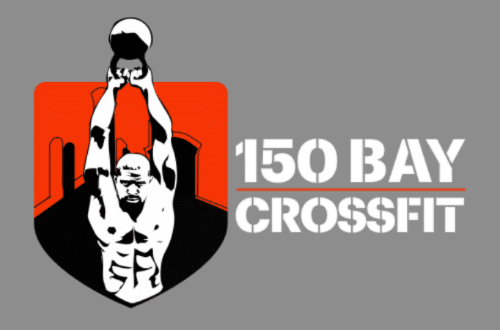Functional fitness style training can take multiple forms and will tend to have a slightly different definition in the eyes of various coaches and athletes. No matter your strength sport, some form of this training style can often offer direct and indirect benefits towards your goals. For example, higher rep functional work could have a positive carry over to one’s total work capacity, recovery ability, and cardiovascular system.
[Coach’s Corner is a strength sport focused Q & A that’s brought to our readership with Andre Crews, Head Coach and Owner of 150 Bay CrossFit in Jersey City, NJ.]
To answer a couple questions about the basic premise of functional fitness style training benefiting all strength athletes, we sat down with Andre Crews, Head Coach and Owner of 150 Bay CrossFit in Jersey City, NJ.
BarBend: How can even a little function fitness style training benefit every type of strength athlete?
Crews: Most strength athletes squat and deadlift, so I don’t need to preach the individual benefits of those functional movements. In my opinion, all strength athletes could benefit from having a more functional cardiovascular base. Strength is king! But cardiovascular fitness can help athletes improve their training and competition performance by improving recovery.
Sure, you may be able to squat 405 lbs, deadlift 500 lbs, and bench 315 lbs on your best day. But can you do them all in the same day? Training your body to work longer than 1-3 reps will improve your endurance and ability to recover between heavy reps. This way when meet day arrives and you hit your last heavy squat, you won’t feel completely gassed for your bench and deadlift.
BarBend: Can you give us a couple examples of how strength athletes [who don’t train in a functional fitness style often] could program this style training into their workouts?
Crews: The easiest way to do this is by putting your working sets on a timer. Let’s say you’re doing 5×5 at 70% for example, do one set every 2 minutes, or E2MOM.
This is technically enough time for your body’s energy systems to recover, but you will likely feel fatigued especially going into sets 3, 4, and 5 especially if you’ve never trained this way.
Keep yourself on the same clock when you do your 5×5 at 72% the following week. Over time, your body will learn to adapt and recover so that your first set of five looks and feels like your last set of five. Plus, it helps keep your training session efficient. How often have you finished your first set, checked Instagram, taken a lap around the gym, texted a friend, then said “well I guess I should start my next set soon.”
In this example, you can knock out all 25 reps in 10 minutes versus something like 30+ (obviously, that’s slightly exaggerated). And you can implement this strategy with all of your working sets when around the 60-80% range. Keep in mind, give yourself more time as you approach heavier percentages, but avoid getting lazy. And let’s be real, we could all use more time in our day!
Feature image from @andrecrews Instagram page.
